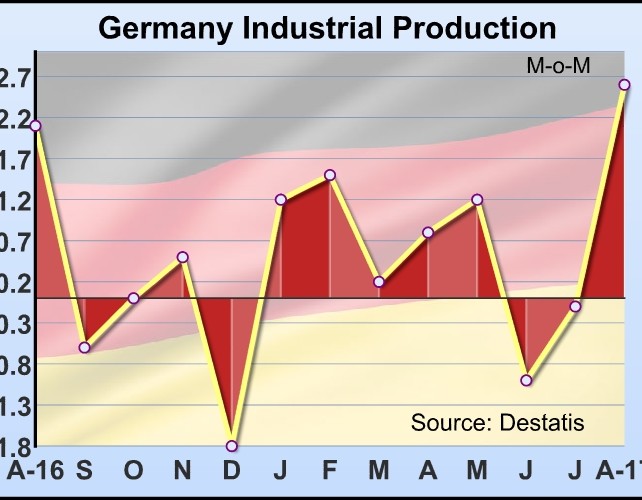
Germany's industrial production expanded the most since July 2011, signaling a strong growth in the third quarter, data from Destatis revealed Monday.
Industrial output grew 2.6 percent month-on-month in August, reversing a revised 0.1 percent fall in July.
Production grew the most since July 2011, when it climbed 2.9 percent. Output was forecast to gain moderately by 0.8 percent.
August's surge in German industrial production was in line with the positive message from business surveys and puts the economy on course for a strong third quarter, Jennifer McKeown, an economist at Capital Economics, said.
The positive German data support the view that July's weak outturn was depressed by statistical difficulties in adjusting for holiday shutdowns, the economist added.
Excluding energy and construction, industrial production climbed 3.2 percent.
Production of capital goods rose 4.8 percent and that of consumer goods advanced 2.1 percent. Intermediate goods output showed a monthly growth of 1.8 percent.
Energy output advanced 1.7 percent, while output of construction sector declined 1.2 percent.
On a yearly basis, growth in industrial production improved unexpectedly to 4.7 percent from 4.2 percent in July. Growth was forecast to slow to 2.9 percent.
Data released last week showed that factory orders grew 3.6 percent in August on robust foreign demand.
The German economy ministry said production in the manufacturing sector has shown a more vigorous upward trend.
The Purchasing Managers' survey showed that Germany's manufacturing logged its strongest growth for over six years in September. Production grew at the strongest rate since April 2011.
by RTT Staff Writer
For comments and feedback: editorial@rttnews.com
Economic News
What parts of the world are seeing the best (and worst) economic performances lately? Click here to check out our Econ Scorecard and find out! See up-to-the-moment rankings for the best and worst performers in GDP, unemployment rate, inflation and much more.

